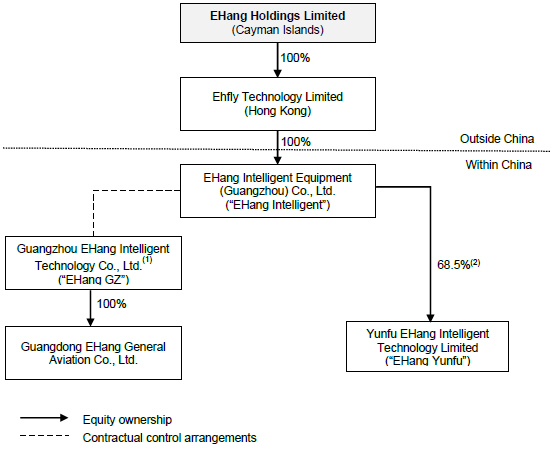We could be adversely affected by security-related concerns of the United States and other countries against Chinese companies and products and political tensions between the United States and China.
Due to security-related concerns, U.S. government actions targeting exports of certain technologies to China are becoming more pervasive. The U.S. government has in the past issued export restrictions that effectively banned U.S. companies from selling products to ZTE Corporation, and in May 2019 imposed a similar ban on sales of all products to Huawei. In 2018, the U.S. adopted new laws designed to address concerns about the export of emerging and foundational technologies to China. In May 2019, former U.S. President Donald J. Trump issued an executive order that invoked national emergency economic powers to implement a framework to regulate the acquisition or transfer of information communications technology in transactions that imposed undue national security risks. In October 2022, the Biden Administration issued extensive new restrictions on the export to China of advanced semiconductors, as well as design software and manufacturing equipment, without a special license. These actions could lead to additional restrictions on the export of products that include or enable technologies on which we rely. Such restrictions imposed by the United States or any other countries may make it more difficult for us to procure or license technological products from these countries, or affect the ability of our PRC suppliers to manufacture and provide us with advanced components, which may increase our costs, impair our products’ competitiveness, and have a material adverse effect on our business.
Similar security-related concerns may affect our ability to export our products to the United States and other countries. In May 2019, the U.S. Department of Homeland Security advised American companies about the inherent security risks associated with Chinese-made drones. In a related development, the U.S. government was also reportedly considering placing Chinese surveillance systems providers, including Hikvision Digital Technology and Dahua Technology, on a trade blacklist that would cut off their access to American hi-tech suppliers. We cannot assure you that our products will not be placed on such trade blacklist in the future. If that event occurs, our ability to export our products to the United States will be adversely affected.
In addition, political tensions between the United States and China have escalated due to, among other things, the COVID-19 outbreak, the PRC National People’s Congress’ passage of Hong Kong national security legislation, sanctions imposed by the U.S. Department of Treasury on certain officials of the Hong Kong Special Administrative Region and the central government of the PRC and the executive orders issued by former U.S. President Donald J. Trump in August 2020 that prohibit certain transactions with ByteDance Ltd., Tencent Holdings Ltd. and the respective subsidiaries of such companies. Rising political tensions could reduce levels of trades, investments, technological exchanges and other economic activities between the two major economies, which would have a material adverse effect on global economic conditions and the stability of global financial markets. Any of these factors could have a material adverse effect on our business, prospects, financial condition and results of operations.
We, the VIE and the VIE’s subsidiaries may need to defend ourselves against claims of intellectual property infringement, which may be time-consuming and costly.
Companies, organizations or individuals, including our competitors, may hold or obtain patents, trademarks or other proprietary rights that would prevent, limit or interfere with our ability to make, use, develop, sell or market our products, operating systems and infrastructure or their components, which could make it more difficult for us to operate our business. Companies holding patents or other intellectual property rights may bring suits alleging infringement of such rights by us, the VIE or the VIE’s subsidiaries or otherwise assert their rights against us, the VIE or the VIE’s subsidiaries. Moreover, our, the VIE’s or its subsidiaries’ applications and uses of trademarks relating to design, software or artificial intelligence technologies could be found to infringe upon existing trademark ownership and rights. We, the VIE or the VIE’s subsidiaries may also fail to apply for key trademarks in a timely manner. For example, there are some precedent registrations by several other Chinese companies of the trademark “
 ” (the Chinese characters for our brand, “EHang”) for vehicles and bicycles, which fall into the same class of products as remote aerial vehicles and aerospace transportation. Although we received a favorable judgement in a proceeding relating to such precedent registrations, we may continue to face intellectual property infringement claims in the future.
” (the Chinese characters for our brand, “EHang”) for vehicles and bicycles, which fall into the same class of products as remote aerial vehicles and aerospace transportation. Although we received a favorable judgement in a proceeding relating to such precedent registrations, we may continue to face intellectual property infringement claims in the future.
33
